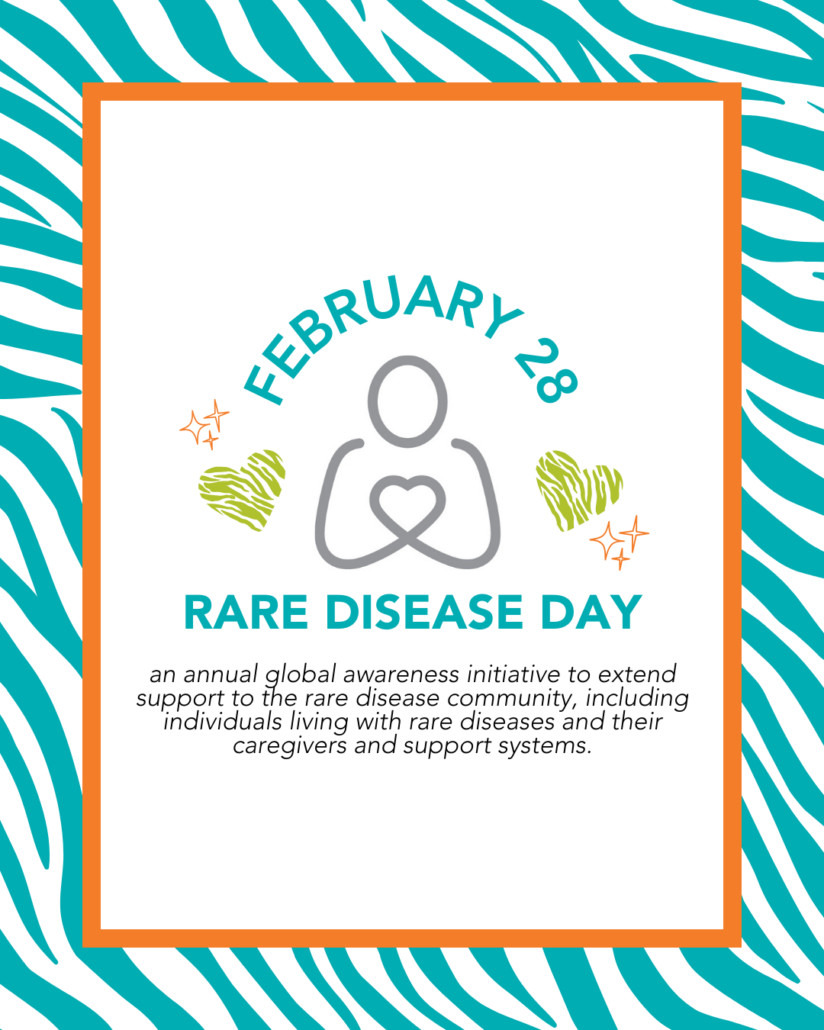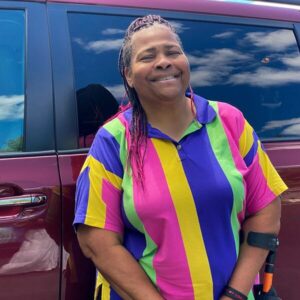This post will explain why Help Hope Live celebrates national Rare Disease Day, why Rare Disease Day matters, and how you can find rare disease financial assistance for yourself or someone you love, including rare disease fundraising with our nonprofit.
February 28 is Rare Disease Day 2025!

When is Rare Disease Day 2025?
Rare Disease Day 2024 is on Friday, February 28.
National Rare Disease Day or Rare Disease Awareness Day is an annual awareness day that takes place on the last day of February.
What is National Rare Disease Day?
Rare Disease Day is an annual global awareness initiative to extend support to the rare disease community, including individuals living with rare diseases and their caregivers and support systems.
Why Rare Disease Day Matters
When you’re experiencing a life-impacting rare disease diagnosis, it’s easy to feel isolated, alone, or misunderstood.
One of the reasons why Rare Disease Day matters is that it gives individuals living with a rare disease the opportunity to realize they are not alone.
As a part of the rare disease community, you are seen and cared about. Your experience is part of a network of strength, support, resilience, and hope that impacts millions.
In addition to helping all members of the rare disease community feel seen and supported, Rare Disease Day is an opportunity to raise awareness of the reality and impact of these diagnoses.
What is a rare disease?
A rare disease is a diagnosis that impacts fewer than 1 in 2,000 people globally, or just 1 in 200,000 Americans.
There are between 7,000 and 10,000 identified diseases that meet this classification, but there may be many others that are not yet formally recognized and identified.
Every rare disease comes with a unique set of characteristics, symptoms, and treatments that impact an individual’s day-to-day and long-term experiences.
Each rare disease is unique but each individual living with a certain rare disease may have some unique experiences or symptoms despite sharing a common diagnosis with another individual.
Rare diseases impact not just one individual but their loved ones, caregivers, friends, and support communities.
Why We Celebrate Rare Disease Day
Our nonprofit, Help Hope Live, helps thousands of clients with rare diagnoses to fundraise for medical costs. Find out how you can get financial assistance for rare diseases and illnesses through community-based medical fundraising.
We use our platform to build community and fight rare disease ignorance year-round, including challenging myths and misconceptions about life with a rare illness or disability through firsthand interviews and highlighting how a rare disease can create a significant financial burden for individuals and families.
Help Hope Live is a proud Global Advocacy Alliance member —a coalition of over 700 organizations allied in supporting rare disease awareness and building community.
The History of Rare Disease Day
Rare Disease Day was first observed in 2008 in Europe. It was established by the European Organization for Rare Diseases (EURORDIS) and quickly spread to the United States the following year.
Today, Rare Disease Day remains just as important to recognize and celebrate.
After all, individuals living with rare diseases and their communities continue to experience significant physical, emotional, and financial day-to-day challenges that are often misunderstood or invisible to the public.
These challenges include difficulties in receiving an accurate diagnosis, finding suitable treatment options and qualified medical professionals to help, and high out-of-pocket medical and related expenses.
It’s also easy for individuals living with rare diseases and their caregivers or advocates to feel abandoned or unheard by the medical system as a particular diagnosis goes unrecognized or untreated for years.
How to Celebrate Rare Disease Day
If you’re a member of the rare disease community, there are many ways to celebrate, and your participation can fit whatever feels authentic and right to you.
You can celebrate Rare Disease Day by:
- making a public or private post or video about your diagnosis
- creating art
- participating in an in-person Rare Disease Day event
- sharing a fundraiser for rare disease related expenses, or
- sharing awareness information and boosting rare disease content creators.
If you’re not directly impacted by a rare disease, you may want to recognize Rare Disease Day by:
- re-sharing a post from a content creator with a rare diagnosis
- reading about rare diseases
- reaching out to someone with a rare disease to share your support and care, or
- making a donation to a charity like Help Hope Live that supports individuals with rare diseases.
Is there a Rare Disease Day color or rare disease ribbon?
The most used Rare Disease Day color is black and white zebra stripes because the zebra is the official animal mascot of rare diseases.
Have you ever heard the expression “When you hear hoofbeats, expect a horse – not a zebra”?
Medical professionals were historically told to follow this metaphor, looking for the simplest and most common diagnosis or explanation for a set of symptoms instead of a more rare or complex possibility.
Ironically, for the individuals living with a rare disease, this concept has led to countless frustrations in securing an accurate diagnosis and assembling a supportive community of medical professionals.
Over time, the zebra has become a symbol of the united rare disease community. This metaphor for medical complexity is now a source of pride and shared identity.
When you hear hoofbeats, think zebra—the rare disease community is everywhere!
Show Your Stripes on Rare Disease Day
The “Show Your Stripes” campaign from rarediseases.org encourages individuals with a rare disease and their support communities to wear striped or zebra-themed clothing and accessories to recognize Rare Disease Day each year.
Rare disease ribbons will typically feature zebra stripes.
Rare Disease Day may also be associated with the colors green, purple, blue, and pink.
How to Find Rare Disease Financial Assistance
Living with a rare disease comes with physical, emotional, social, and financial burdens.
At Help Hope Live, we’re a nonprofit that partners with individuals and families living with rare diseases to start trusted medical fundraising campaigns.
Fundraising can be hard, but we help make it simple with one-on-one support from a team of specialists. You can fundraise online, in-person, or both with customized materials and expert fundraising guidance.
Submit an initial online application, get connected with a one-on-one specialist, fundraise with our support, and submit medical and related bills to us—and we’ll pay them directly. We verify each patient’s medical condition and administer funds raised so they typically won’t count against other benefits. Because we’re a nonprofit, donations are also tax deductible for donors.
Not sure if fundraising is the right fit for you? We still want to connect you to helpful resources.
Click the button below to access our hand-reviewed list of resources for individuals living with a catastrophic illness or rare disease. The resources we’ve collected include sources of direct financial support as well as support groups and other sources of help:









